You are using an out of date browser. It may not display this or other websites correctly.
You should upgrade or use an alternative browser.
You should upgrade or use an alternative browser.
AGS "0" & Sarin Data Vs. HCA vs. Brilliance Scope
- Thread starter Colored Gemstone Nut
- Start date
- Status
- Not open for further replies. Please create a new topic or request for this thread to be opened.
- Joined
- Nov 21, 2002
- Messages
- 2,326
Scoth-Thanks for adding to the thread. I am in the process of finishing up the charts for the hca/b-scope similarities and am trying to collect some additional data on poorly cut stones. Having a hard time though since stones advertised are of high quality and seem to fall in the parameters displaying the best in both categories. I think it is great that you are showing the similarities between the simulated diamond calc image and the actual image. Uncanny how accurate diamoncalc is huh...
Thanks Again-Josh RIoux
Sitka, Alaska

Thanks Again-Josh RIoux
Sitka, Alaska

(Here's the post that got fudged earlier) :
So what can be concluded from the comparison of these two stones:
A) 1.06ct /www.pricescope.com/idealbb/images/smilies/3.gif[/img]e vvs2/www.pricescope.com/idealbb/images/smilies/3.gif[/img] “standard girdle”
B) 1.07ct /www.pricescope.com/idealbb/images/smilies/3.gif[/img]e vvs2/www.pricescope.com/idealbb/images/smilies/3.gif[/img] “tweaked girdle”
First of all, as Jonathan pointed out, both are no doubt gorgeous stones, each representing its own “flavor”. People will choose between them depending on personal preference. But still, if all those tools have any meaning, what is the conclusion?
1) B has a slightly better HCA score, which has nothing to do with tweaked girdle or not, just geometrical proportions.
2) Assuming the DiamCalc results are correct (at least they are consistent with what I found in other stones of the respective flavors), A is a little better in light return, but the difference is marginal, while B is better in light leakage and especially contrast.
3) I think Jonathans conclusion about the LightScope evaluation is debatable: I would contend that the presence of significant leakage around the girdle (those notorious triangular thingys) in A more than makes up for the paler reds in B. Btw, this will also make A appear to be smaller when compared face up next to B.
4) The only “Tool” that shows a significant advantage for A over B is the BrillianceScope, with A scoring VH/VH/VH, while B gets “only” H/VH/H.
Assuming that at least one of the first three tools measures also everything the Bscope assesses, namely light return, light leakage and scintillation ( which I understand to be related to contrast), why is there such a difference in the Bscope result, when A and B come out almost even considering the first three tools?
So what can be concluded from the comparison of these two stones:
A) 1.06ct /www.pricescope.com/idealbb/images/smilies/3.gif[/img]e vvs2/www.pricescope.com/idealbb/images/smilies/3.gif[/img] “standard girdle”
B) 1.07ct /www.pricescope.com/idealbb/images/smilies/3.gif[/img]e vvs2/www.pricescope.com/idealbb/images/smilies/3.gif[/img] “tweaked girdle”
First of all, as Jonathan pointed out, both are no doubt gorgeous stones, each representing its own “flavor”. People will choose between them depending on personal preference. But still, if all those tools have any meaning, what is the conclusion?
1) B has a slightly better HCA score, which has nothing to do with tweaked girdle or not, just geometrical proportions.
2) Assuming the DiamCalc results are correct (at least they are consistent with what I found in other stones of the respective flavors), A is a little better in light return, but the difference is marginal, while B is better in light leakage and especially contrast.
3) I think Jonathans conclusion about the LightScope evaluation is debatable: I would contend that the presence of significant leakage around the girdle (those notorious triangular thingys) in A more than makes up for the paler reds in B. Btw, this will also make A appear to be smaller when compared face up next to B.
4) The only “Tool” that shows a significant advantage for A over B is the BrillianceScope, with A scoring VH/VH/VH, while B gets “only” H/VH/H.
Assuming that at least one of the first three tools measures also everything the Bscope assesses, namely light return, light leakage and scintillation ( which I understand to be related to contrast), why is there such a difference in the Bscope result, when A and B come out almost even considering the first three tools?
Scotch
canadianice
Rough_Rock
- Joined
- Feb 4, 2003
- Messages
- 82
- Joined
- Nov 21, 2002
- Messages
- 2,326
Canadianice-Interesting scope image. This is one of those stones with a very interesting combination of black and reds. Great BS results in a stone where proportions standardized by ags are less than ideal. Goes to show you can get stones with ex results which fall outside the ags "0" cut grade.----------------
On 3/1/2003 2:36:13 PM canadianice wrote:
Check out this AGS "10" stone .83ct G VS2.
http://www.goodoldgold.com/0_83ct_g_vs2_ags10.htm
It scores VH-VH-H3 on the B'scope.
It gets a "Low crown angle can result in chipping of the girdle. Should not be considered for purchase." on the HCA (no score available).
Interesting...
----------------
As far as the HCA results when I get home I'll run the numbers on the desktop version to see what the numbers show.
-Josh Rioux
Sitka, Alaska

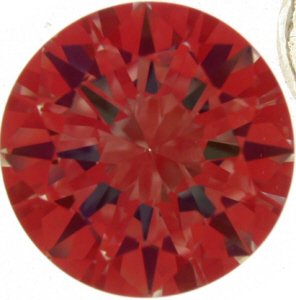
Ouch! But then again, Jonathan makes a point of telling people to consider at least the LightScope result (for optical symmetry and leakage) and Sarin/Ogi scans (for geometrical proportions) in addition to the Brilliancescope.
The question remains: The Bscope measures something, but what is it? You have stones that excel with HCA, LightScope and DiamCalc, but come out less than optimal (say H/VH/H) in the Bscope, like Jonathan's 1.078ct stone mentioned above, and you have a stone ( like this 0.83ct) that has a poor (presumably?) HCA score and bad optical symmetry, and it's VH/VH/H! Just for the heck of it, I put the proportions of this 0.83ct thing into DiamCalc , and guess what?
Light return mono: 1.07
Light return stereo: 1.05
Light leakage mono: 1.22 !!
Light leakage stereo: 1.28 !!!
Contrast: 0.82
How about that? To be fair, I didn't make much of an effort to fine tune for star facet and lower girdle lenght or tweaking of the girdle, but still... Btw, I have to correct about not finding any stones worse than H/VH/H on the web. Check out http://www.goodoldgold.com/the_idealscope_firescope_tm.htm . Seems everytime I go to the GOG site I find something new, truly amazing wealth of information there.
Scotch
The question remains: The Bscope measures something, but what is it? You have stones that excel with HCA, LightScope and DiamCalc, but come out less than optimal (say H/VH/H) in the Bscope, like Jonathan's 1.078ct stone mentioned above, and you have a stone ( like this 0.83ct) that has a poor (presumably?) HCA score and bad optical symmetry, and it's VH/VH/H! Just for the heck of it, I put the proportions of this 0.83ct thing into DiamCalc , and guess what?
Light return mono: 1.07
Light return stereo: 1.05
Light leakage mono: 1.22 !!
Light leakage stereo: 1.28 !!!
Contrast: 0.82
How about that? To be fair, I didn't make much of an effort to fine tune for star facet and lower girdle lenght or tweaking of the girdle, but still... Btw, I have to correct about not finding any stones worse than H/VH/H on the web. Check out http://www.goodoldgold.com/the_idealscope_firescope_tm.htm . Seems everytime I go to the GOG site I find something new, truly amazing wealth of information there.
Scotch
- Joined
- Mar 28, 2001
- Messages
- 6,341
----------------
On 2/28/2003 7:59:52 PM scotch wrote:
Here are the DiamCalc results for Rhino's 1.06ct (standard girdle) stone:
Light return mono: 1.01
Light return stereo: 0.99
Light leakage mono: 0.97
Light leakage stereo: 0.95
Contrast: 0.90
Assumptions for this stone: Star facet length 60.7%, lower girdle facets 78%.
The results for the 1.078ct (tweaked girdle) stone:
Light return mono: 0.99
Light return stereo: 0.97
Light leakage mono: 1.00
Light leakage stereo: 1.02
Contrast: 1.08
Assumptions for this stone: Star facet length 60%, lower girdles 77.9%.
Some pictures are to follow, the real LightScope photos are courtesy of GoodOldGold.
Scotch
----------------
Hi Scotch,
First let me say ... EXCELLENT research but you do need to make a couple of adjustments.
Adjustment you need to make to stone 1, the 1.06ct F VS1. Your assumption of 60% stars are fine but you're lower girdles are more around 80 as opposed to 78. This will change your sim image notably. Particularly you'll see the hot spots between the arrow heads become more pronounced as it is in the actual LightScope image of the stone.
In stone #2, the 1.078ct E VVS2 you need to adjust your stars to around 50 (or 53) and keep your lower girdles to around 78 (which it seems they are already). And you'll note what happens to the blacks between the arrows there as well.
Great work. Keep it up.
Rhino
- Joined
- Mar 28, 2001
- Messages
- 6,341
Canadianice,
Thanks for posting that reference to the AGS10. Scotch ... ISN'T THAT A KICK!!! That AGS10 has been the BEST scoring stone I've ran to date in the DiamCalc!!!
Just some comments from my personal observations of the 1.07 and 1.06ct stones.
I would agree that the 1.07ct looks a tad larger (all things being considered equal) however I don't think it's becaue of the tweaked girdles. I would say it was simply because of the stones spread, which does get Excellent on HCA as opposed to the 1.06ct seperating the 2 on the HCA score.
I also agree with you on the contrast issue. There is less action between the arrows on the 1.07ct which contributes to this factor and ESPECIALLY in soft light conditions the arrows are a bit more prominent. This also agrees with DiamCalc assessment. In soft or diffuse light conditions the 1.07ct may appeal more to a person. It's just NEAT to be able to see such perfect symmetry in a diamond with the human eye.
Having said that however, the addition of the dark reds and blacks in the 1.06ct give this diamond the leverage in direct or strong light conditions. The scintillation factor and REASON for the higher BrillianceScope results become apparent when the 2 are compared in direct light conditions. This is why it is of utmost importance to understand the difference between diamonds that exhibit more dark reds and blacks vs those that exhibit less dark reds and blacks.
The following is on a page of mine not yet published and is a work in progress ... Remember where you've heard it first.
 PRICESCOPE!
PRICESCOPE!
 Ok ... there's my plug for Leonid.
Ok ... there's my plug for Leonid.

The following is also going to be demonstrated with video and commentary by myself under the analogue BrillianceScope viewer.
REMEMBER ... the BrillianceScope is analyzing and comparing the results of diamonds IN DIRECT LIGHT CONDITIONS. NOT diffuse light conditions.
After working with both flavors of super ideal cuts on a daily basis for over 2 years now my personal conclusions are this.
Diamonds are observed under MANY different light conditions. Too many to list here.
There are 2 primary light conditions under which diamonds are observed. That of direct light and that of diffuse light.
Diamonds of the shorter star/lower girdle combo in direct light conditions exhibit some of the most intense fire to be observed in a diamond. Broad bold strokes of flashing rainbows are some of the best words I can use to describe how these diamond appear in sunlight, or direct light conditions.
The same diamonds under diffuse light conditions exhibit an optical symmetry that is observable with the unaided eye. The facets that were throwing off the flames in direct light now form a perfect 8 rayed star which is distinct and the softer the light condition the more it becomes apparent. IT IS THESE kind of stones, IMO that have the leverage in diffuse light conditions though beautiful in both.
Diamonds of the longer star/lower girdle combo in direct light conditions also exhibit some of the most intense fire to be observed in a diamond HOWEVER added to this are an abundance of sparks or shards of light in the midst of the fire. Like the fuse of a firecracker that has never been extinguished. If you could put a picture to the sound you hear when that bacon is sizzling in it's own grease. IT IS THESE kind of stones, IMO that have the leverage in direct light conditions though beautiful in both.
These same diamonds in diffuse light conditions ALSO have an optical symmetry that is observable to the unaided eye. The primary facets that contributed to the intense fire in direct light conditions also form a perfect 8 rayed star as well. Since these facets are a bit thinner and the fact that they have other parts on the pavilion that throw light perpendicular to the crown at equal intensity in direct light conditions (more hot spots or blacks), they are not as prominent as in the shorter star/lower girdle combo in diffuse light conditions.
Over the years I've had the pleasure of showing BOTH to my clients and have gotten mixed responses though I can tell you from experience most of my clients have preferred the longer star/lower girdle combo.
Tomorrow I will be running the new I-see 2 technology through it's paces and will be testing various diamonds on it including stones of the types we've been talking about here. I'll let ya know if this thing is for real or not.
Peace,
Rhino
Thanks for posting that reference to the AGS10. Scotch ... ISN'T THAT A KICK!!! That AGS10 has been the BEST scoring stone I've ran to date in the DiamCalc!!!
Just some comments from my personal observations of the 1.07 and 1.06ct stones.
I would agree that the 1.07ct looks a tad larger (all things being considered equal) however I don't think it's becaue of the tweaked girdles. I would say it was simply because of the stones spread, which does get Excellent on HCA as opposed to the 1.06ct seperating the 2 on the HCA score.
I also agree with you on the contrast issue. There is less action between the arrows on the 1.07ct which contributes to this factor and ESPECIALLY in soft light conditions the arrows are a bit more prominent. This also agrees with DiamCalc assessment. In soft or diffuse light conditions the 1.07ct may appeal more to a person. It's just NEAT to be able to see such perfect symmetry in a diamond with the human eye.
Having said that however, the addition of the dark reds and blacks in the 1.06ct give this diamond the leverage in direct or strong light conditions. The scintillation factor and REASON for the higher BrillianceScope results become apparent when the 2 are compared in direct light conditions. This is why it is of utmost importance to understand the difference between diamonds that exhibit more dark reds and blacks vs those that exhibit less dark reds and blacks.
The following is on a page of mine not yet published and is a work in progress ... Remember where you've heard it first.



The following is also going to be demonstrated with video and commentary by myself under the analogue BrillianceScope viewer.
REMEMBER ... the BrillianceScope is analyzing and comparing the results of diamonds IN DIRECT LIGHT CONDITIONS. NOT diffuse light conditions.
After working with both flavors of super ideal cuts on a daily basis for over 2 years now my personal conclusions are this.
Diamonds are observed under MANY different light conditions. Too many to list here.
There are 2 primary light conditions under which diamonds are observed. That of direct light and that of diffuse light.
Diamonds of the shorter star/lower girdle combo in direct light conditions exhibit some of the most intense fire to be observed in a diamond. Broad bold strokes of flashing rainbows are some of the best words I can use to describe how these diamond appear in sunlight, or direct light conditions.
The same diamonds under diffuse light conditions exhibit an optical symmetry that is observable with the unaided eye. The facets that were throwing off the flames in direct light now form a perfect 8 rayed star which is distinct and the softer the light condition the more it becomes apparent. IT IS THESE kind of stones, IMO that have the leverage in diffuse light conditions though beautiful in both.
Diamonds of the longer star/lower girdle combo in direct light conditions also exhibit some of the most intense fire to be observed in a diamond HOWEVER added to this are an abundance of sparks or shards of light in the midst of the fire. Like the fuse of a firecracker that has never been extinguished. If you could put a picture to the sound you hear when that bacon is sizzling in it's own grease. IT IS THESE kind of stones, IMO that have the leverage in direct light conditions though beautiful in both.
These same diamonds in diffuse light conditions ALSO have an optical symmetry that is observable to the unaided eye. The primary facets that contributed to the intense fire in direct light conditions also form a perfect 8 rayed star as well. Since these facets are a bit thinner and the fact that they have other parts on the pavilion that throw light perpendicular to the crown at equal intensity in direct light conditions (more hot spots or blacks), they are not as prominent as in the shorter star/lower girdle combo in diffuse light conditions.
Over the years I've had the pleasure of showing BOTH to my clients and have gotten mixed responses though I can tell you from experience most of my clients have preferred the longer star/lower girdle combo.
Tomorrow I will be running the new I-see 2 technology through it's paces and will be testing various diamonds on it including stones of the types we've been talking about here. I'll let ya know if this thing is for real or not.
Peace,
Rhino
----------------
On 3/1/2003 3:56:51 PM scotch wrote:
The question remains: The Bscope measures something, but what is it?
HI SCOTCH/SCORPION/CUTNUT/RHINO-DOES ANYBODY KNOW HOW THE BSCOPE MEASURES LIGHT RETURN AND IF SO HOW DOES IT MEASURE THE INTENSITY OR SATURATION OF THAT LIGHT???
-THANKS-JARED
optimized
Shiny_Rock
- Joined
- Dec 28, 2002
- Messages
- 306
Jared,
My understanding of the mechanics behind the BScope is that the system essentially moves a light source across a predetermined arc and takes a number of digital photographs of the diamond from directly above the table while the light moves. It then counts the number of "white light" and "colored light" (non-white) pixels in the resulting images and assigns a ranking based on the total number of white/colored pixels. It rates scintillation by comparing the images and calculating the differences in the positioning of white/colored pixels from image to image. It's a pretty simple process, but perhaps its beauty as a tool lies in that simplicity.
It strikes me that this simplicity is also what makes some folks knock it as a tool. Given the fact that humans haven't created any sort of true artificial intelligence yet, there are always going to be cases of the device giving somewhat wacky results based on the limited amount of information it actually takes into account, but isn't that why just about everyone agrees that the human eye should be the ultimate judge?

Jonathan,
, is really pushing it as the greatest thing since cut diamonds (so to speak). Be sure to let us in on the results, eh?

-Tim
[/u]
My understanding of the mechanics behind the BScope is that the system essentially moves a light source across a predetermined arc and takes a number of digital photographs of the diamond from directly above the table while the light moves. It then counts the number of "white light" and "colored light" (non-white) pixels in the resulting images and assigns a ranking based on the total number of white/colored pixels. It rates scintillation by comparing the images and calculating the differences in the positioning of white/colored pixels from image to image. It's a pretty simple process, but perhaps its beauty as a tool lies in that simplicity.
It strikes me that this simplicity is also what makes some folks knock it as a tool. Given the fact that humans haven't created any sort of true artificial intelligence yet, there are always going to be cases of the device giving somewhat wacky results based on the limited amount of information it actually takes into account, but isn't that why just about everyone agrees that the human eye should be the ultimate judge?

Jonathan,
, is really pushing it as the greatest thing since cut diamonds (so to speak). Be sure to let us in on the results, eh?

-Tim
[/u]
optimized
Shiny_Rock
- Joined
- Dec 28, 2002
- Messages
- 306
elsewhere in the forums. Since many objections I've heard raised about the device have to do with its consistency and reliability, I'm interested in hearing comments from anybody here on whether the things Barry mentions make the device reliable for real-world use...
~~~~~
Calibration of the BrillianceScope is done manually
by the operator/vendor according to clear directions and
instructions set forth by Gemex. If not done properly
and on a continuous basis the internal software will disable
and shut down the machine.
After a diamond has been run, resultant images and output are
sent to Gemex for review and approval. Gemex can determine
whether the machine is properly calibrated and the stone run
correctly. If the 'run' passes Gemex's review the images are converted
to gif's and sent to the vendor for his use.
If not, the vendor is asked to re-run the diamond. Some problems that
might interfere with a clear result are lint or spec of dirt on the
diamond, improper centering, or 'planing' ( a film that settles
between the diamond's table and the glass plate of the BScope).
Problems relating to the software can be detected and are
addressed either by Gemex from their offices or through on-site
tech support. A vendor can not access his BScope data unless
it has been first reviewed, approved, and returned by Gemex to the vendor.
Gemex encourages vendors to have their results validated by a printed
Light Analysis Report.
Barry
~~~~~
-Tim
[/u][/u]
~~~~~
Calibration of the BrillianceScope is done manually
by the operator/vendor according to clear directions and
instructions set forth by Gemex. If not done properly
and on a continuous basis the internal software will disable
and shut down the machine.
After a diamond has been run, resultant images and output are
sent to Gemex for review and approval. Gemex can determine
whether the machine is properly calibrated and the stone run
correctly. If the 'run' passes Gemex's review the images are converted
to gif's and sent to the vendor for his use.
If not, the vendor is asked to re-run the diamond. Some problems that
might interfere with a clear result are lint or spec of dirt on the
diamond, improper centering, or 'planing' ( a film that settles
between the diamond's table and the glass plate of the BScope).
Problems relating to the software can be detected and are
addressed either by Gemex from their offices or through on-site
tech support. A vendor can not access his BScope data unless
it has been first reviewed, approved, and returned by Gemex to the vendor.
Gemex encourages vendors to have their results validated by a printed
Light Analysis Report.
Barry
~~~~~
-Tim
[/u][/u]
Sorry IceFind,
I can not help you with that, I'm just beginning to scratch the surface on the Bscope issue myself. There is a lot of information about this and related topics here on pricescope and over on DiamondTalk, you can do some searches and review the threads that come up. I hope to know more sometime.
Scotch
I can not help you with that, I'm just beginning to scratch the surface on the Bscope issue myself. There is a lot of information about this and related topics here on pricescope and over on DiamondTalk, you can do some searches and review the threads that come up. I hope to know more sometime.
Scotch
pricescope
Ideal_Rock
- Joined
- Dec 31, 1999
- Messages
- 8,266
optimized
Shiny_Rock
- Joined
- Dec 28, 2002
- Messages
- 306
optimized
Shiny_Rock
- Joined
- Dec 28, 2002
- Messages
- 306
optimized
Shiny_Rock
- Joined
- Dec 28, 2002
- Messages
- 306
- Joined
- Nov 21, 2002
- Messages
- 2,326
Tim-Great Job Man. Thanks for posting those results . I am generating and sorting the data based on crown and pavillion angles which are most prevelant in the 120 ideal stones I've charted. I am then going back through the numbers and looking at all the crown and pavillion measurements, not just the average % of the combined angles to compare how tight the proportions are on a given stone and then comparing that data to the light output on the readings. Just learning for me has been fun and welcome any advice from onlookers. Jonathan/Robin&Todd/Richard Sherwood/CutNut/RockDoc/Oldminer/Sergey. It's nice to also have a data base and add to it over time as more stones are posted on the 2 sites. Breaking it all down has been fun for me and learning about everything has been so exciting. Thanks again Tim.....
-Josh Rioux
Sitka, Alaska







-Josh Rioux
Sitka, Alaska







computerguy
Rough_Rock
- Joined
- Jan 27, 2004
- Messages
- 30
To all: Wow, this is a really, really interesting thread. I hope there are some updates to it soon. I'm definitely a newbie when compared to Cut Nut, Leonid, etc. Hopefully this thread can answer a few questions for me.
Specifically, I was interested in the following statements and questions:

Specifically, I was interested in the following statements and questions:
- I have read from knowledgeable users on PS that an AGS000 stone while very nice, is a guarantee of a completely wonderful stone with good light concern. Given that statement, what are other ways to assess light return?
- Very few local vendors in Vancouver, BC, are really aware of stuff other than "hey this is an AGS000, H&A stone, therefore it must be wonderful." No one seems to know what is a BrillianceScope. I was interested in HCA, but wasn't sure how it correlates with actual empirical BrillianceScope results. My feeling was that if given the chance between an AGS000 H&A that scores above 2.x and one that scores below 2.x, I should use HCA to exclude the latter. Is this a good diamond exclusion methodology? (I plan to use other parameters once the stone is HCA 2.x and below.)
- Looking at the above data, it seems that GOG and SBC sell stones that are scoring below 1.5 and their stones have high BS ratings. I'd like to see some stones that have poor HCA numbers exceeding 2.x and their BS ratings. (I guess we'll have to look on other web sites that sell less shiny diamonds.
) Right now, would PS readers definitely state that HCA scores have a direct and very tight correlation with good BS scores?

I'm interested in purchasing a diamond with good light performance but very few local/Canadian vendors speak "sarin", "HCA", and "BrillianceScope". I'm hoping to exclude stones by getting angle data from AGS reports and using HCA. Once a stone is no longer excluded, I was thinking about then using DiamCalc.
Urgh. Computer people and engineer are always talking about techy stuff but they never talk about the beauty of a stone.

RWW
- Status
- Not open for further replies. Please create a new topic or request for this thread to be opened.
Share:
The Ultimate Guide to Men’s Wedding Bands: Metals, Fit & Finish
The Ultimate Guide to Men’s Wedding Bands: Metals, Fit & Finish - 06/27
Chipped Diamonds: Causes, Risks, and What You Should Do About It
Chipped Diamonds: Causes, Risks, and What You Should Do About It - 06/27

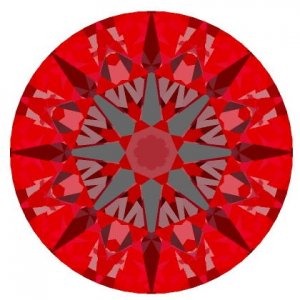
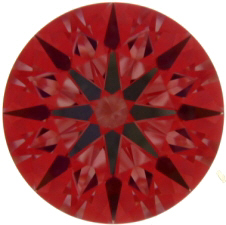
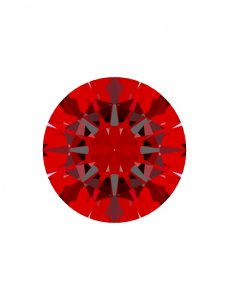

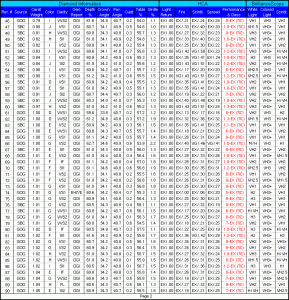
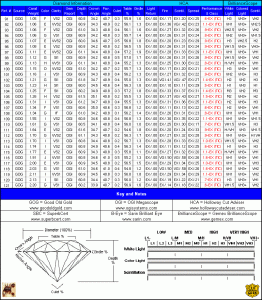


300x240.png)